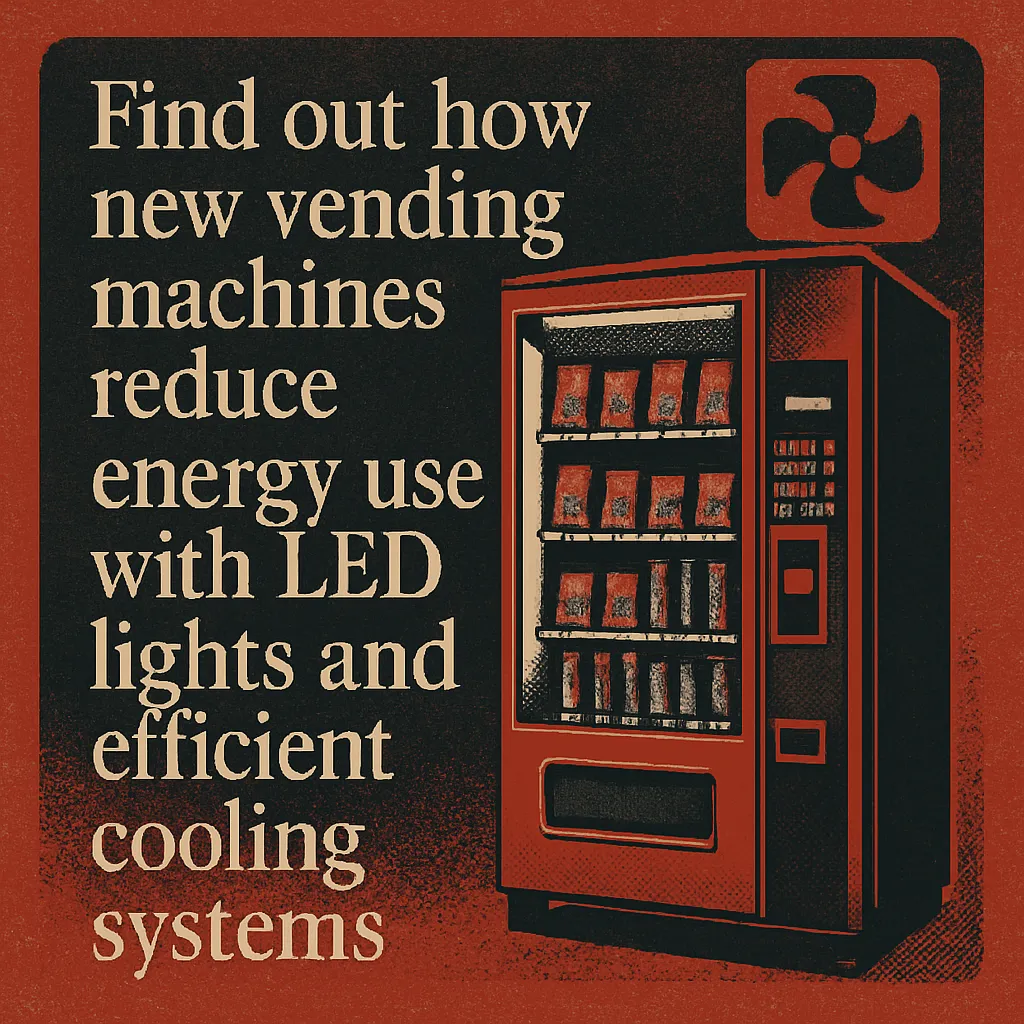Energy-Efficient Vending Technology
Find out how new vending machines reduce energy use with LED lights and efficient cooling systems.
Back to Vending Technology ResourcesFind out how new vending machines reduce energy use with LED lights and efficient cooling systems.
Back to Vending Technology ResourcesEmbrace sustainability and significant cost savings with vending machines engineered for minimal energy consumption. These innovative units integrate cutting-edge features to deliver optimal performance with a reduced environmental footprint.
![]() Significantly lower operating costs through reduced energy bills
Significantly lower operating costs through reduced energy bills
![]() Environmentally friendly operations for a greener business image
Environmentally friendly operations for a greener business image
![]() Advanced cooling and lighting ensure product quality and presentation
Advanced cooling and lighting ensure product quality and presentation

In an era where sustainability and operational costs are paramount, energy-efficient vending technology has emerged as a game-changer. These modern machines are designed not only to provide convenient access to snacks and beverages but also to significantly reduce their environmental impact and operational expenses. The core of this efficiency lies in innovative design and the integration of smart technologies.
Central to energy-efficient vending are several key technological advancements. One of the most visible improvements is the widespread adoption of LED lighting. Unlike older fluorescent bulbs, LEDs consume a fraction of the electricity and produce very little heat, which in turn reduces the workload on the cooling system. This dual benefit drastically cuts down on overall energy usage.
Another crucial component is the sophisticated cooling system. Modern energy-efficient vending machines often feature intelligent compressors and advanced insulation materials that maintain precise temperatures with minimal power. These systems can adapt to environmental conditions, only consuming power when necessary, a stark contrast to older, less responsive cooling units. This focus on optimized cooling also benefits specific applications, such as energy-efficient AI vending coolers.
The impact of energy-efficient vending technology extends beyond just individual machines. For businesses, the economic benefits are clear: lower electricity bills contribute directly to reduced operating costs and improved profitability. Facilities looking to bolster their green credentials can showcase these machines as part of a broader commitment to sustainability. This resonates with an increasingly eco-conscious public and can enhance a business’s public image. Organizations focused on environmental responsibility might also align their office amenities with greener options, such as using eco-friendly office coffee options.
Moreover, these machines often boast improved durability and advanced telemetry systems that allow for remote monitoring and diagnostics. This means less downtime, more efficient routes for restocking, and quicker resolution of any issues, further enhancing their overall efficiency. For businesses considering their long-term investment, understanding the full scope of vending technology is crucial; exploring resources like understanding vending machine technology can provide valuable insights into these integrated systems.
Energy-efficient vending technology uses advanced components and designs, such as LED lighting, improved insulation, and smart cooling systems, to significantly reduce electricity consumption compared to older models.
Modern energy-efficient vending machines can reduce energy consumption by 30% to 50% or even more compared to conventional models, leading to substantial savings on electricity bills.
LED lighting consumes far less electricity and produces less heat than traditional fluorescent bulbs. This not only saves energy directly but also reduces the load on the machine's cooling system.
Efficient cooling systems often feature variable speed compressors, intelligent temperature controls, and improved airflow, allowing them to maintain optimal product temperature with less energy expenditure.
While the initial investment for energy-efficient vending machines might be slightly higher, the long-term savings from reduced electricity costs often lead to a lower total cost of ownership and a quicker return on investment.
No, energy-efficient features are designed to enhance performance. They ensure consistent product cooling, extend component lifespan, and can even contribute to quieter operation.
Beyond LED lights and cooling, technologies like enhanced insulation, smart power management systems, and remote monitoring for optimized operation also contribute to overall energy efficiency.
Absolutely. By consuming less electricity, these machines reduce carbon emissions and lessen the environmental impact associated with energy generation, aligning with sustainability goals.
Some components, like lighting, can often be upgraded to LED. However, a full overhaul of cooling systems and insulation might require purchasing a new, purpose-built energy-efficient machine for maximum savings.
They are beneficial in any location, but most notably in high-traffic areas, outdoor placements, or facilities focused on green initiatives, where energy consumption might otherwise be higher or sustainability is a priority.